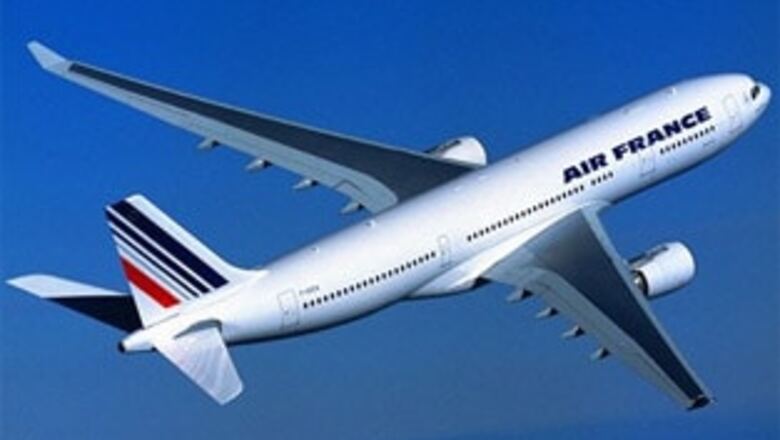
views
Rio de Janeiro/Paris: Recovery teams have pulled an additional 17 bodies out of the Atlantic Ocean off Brazil, bringing the total number of bodies retrieved after last week's Air France plane crash to 41.
The airliner, travelling from Rio de Janeiro to Paris with 228 people on board, crashed into the ocean in the early hours of June 1 about 1,300 km northeast of Brazil's coast, in a region beset by rough seas and tumultuous storms, which have hindered recovery efforts.
As the Brazilian military continued to look for more bodies, the remains of 16 people that were recovered from the ocean over the weekend were brought to the Brazilian island of Fernando de Noronha, located near the crash site. The bodies will later be transferred to mainland Brazil, where they were to be examined by forensic experts from Brazil and France.
Brazilian civil aviation spokesman, Brigadier Ramon Cardoso, said the 25 bodies recovered on Monday and on Tuesday were also being taken to the island.
Beginning on Wednesday the search area would be expanded to the north towards the Saint Paul and Saint Peter Rocks archipelago, in an area under the control of Senegal, Cardoso said.
The African country had authorised the activities of search aircraft and ships in that region, where the bodies of other occupants of the crashed Airbus A330-200 were believed to have been carried by marine currents.
The Brazilian military was also retrieving debris from the airliner, which would eventually be handed over to French authorities investigating the cause of the crash.
On Tuesday, they showed a photograph of one such portion of the plane - apparently a wing - which is aboard the recovery ship Constituicao, although they warned that it may be some time before such debris is transferred to Fernando de Noronha.
"Rescuing bodies remains our priority," Tabosa said.
The cause of the worst commercial aviation disaster since 2001 remains a mystery. Eight days after the Airbus A330-200 plunged into the sea, the attention of investigators remained focused on the plane's airspeed sensors, which apparently malfunctioned in the final minutes of the doomed flight.
Because of the crash, Air France has presented its pilots with a schedule for replacing the sensors, called Pitot tubes, on its fleet of Airbus A330 and A340 planes, the online edition of the weekly Le Point reported on Tuesday.
According to a spokesman for a union representing Air France personnel, the replacement of two of three Pitot tubes on each plane is to take place in a few days.
Pitot tubes provide information about ambient air pressure and therefore aid in measuring the airspeed of an aircraft.
Although no link between a malfunction of the Pitot tubes and the crash has yet been made, investigators are concentrating on their condition minutes before the crash, when the doomed Airbus A330-200 sent out a series of inconsistent airspeed readings.
But the European Aviation Safety Agency (EASA) said on Tuesday that the breakdown of the Pitot tubes was probably not the reason for the accident.
The EASA nevertheless issued a safety advisory to airline pilots that they must rely on other flight data if the devices break down. The advisory from the Cologne, Germany-based agency went to all operators of intercontinental flights.
Another Air France union has told the carrier's pilots not to take command of any Airbus A330 or A340 plane in which at least two of the sensors have not been replaced.
Since 1995, there have been a number of cases in which the Pitot tubes indicated an incorrect airspeed, which prompted the French Civil Aviation Authority (DGAC) in 2001 to order repairs to the devices, Le Figaro reported.
The measure was justified by the possibility of "the loss of or fluctuations in airspeed indications in extreme weather conditions", the DGAC said at the time.
It is believed the doomed Air France flight encountered a violent storm just before it fell out of the sky.
The international police agency Interpol said on Tuesday that it would aid in coordinating international efforts to identify the 228 victims, who came from 32 countries.
This will involve the collection of data from the recovered remains, such as tattoos, fingerprints, surgical implants and dental X-rays, Interpol said.
Recovery efforts involved 825 members of the Brazilian military, 14 aircraft - two of them French - and six ships, including one French ship. More Brazilian, French and US ships are expected in the coming days.
The French nuclear-powered submarine Emeraude and the amphibian ship Mistral were to join the efforts on Wednesday with a focus on finding the flight recorders in an area where the ocean floor is as much as 3,500 metres deep.



















Comments
0 comment